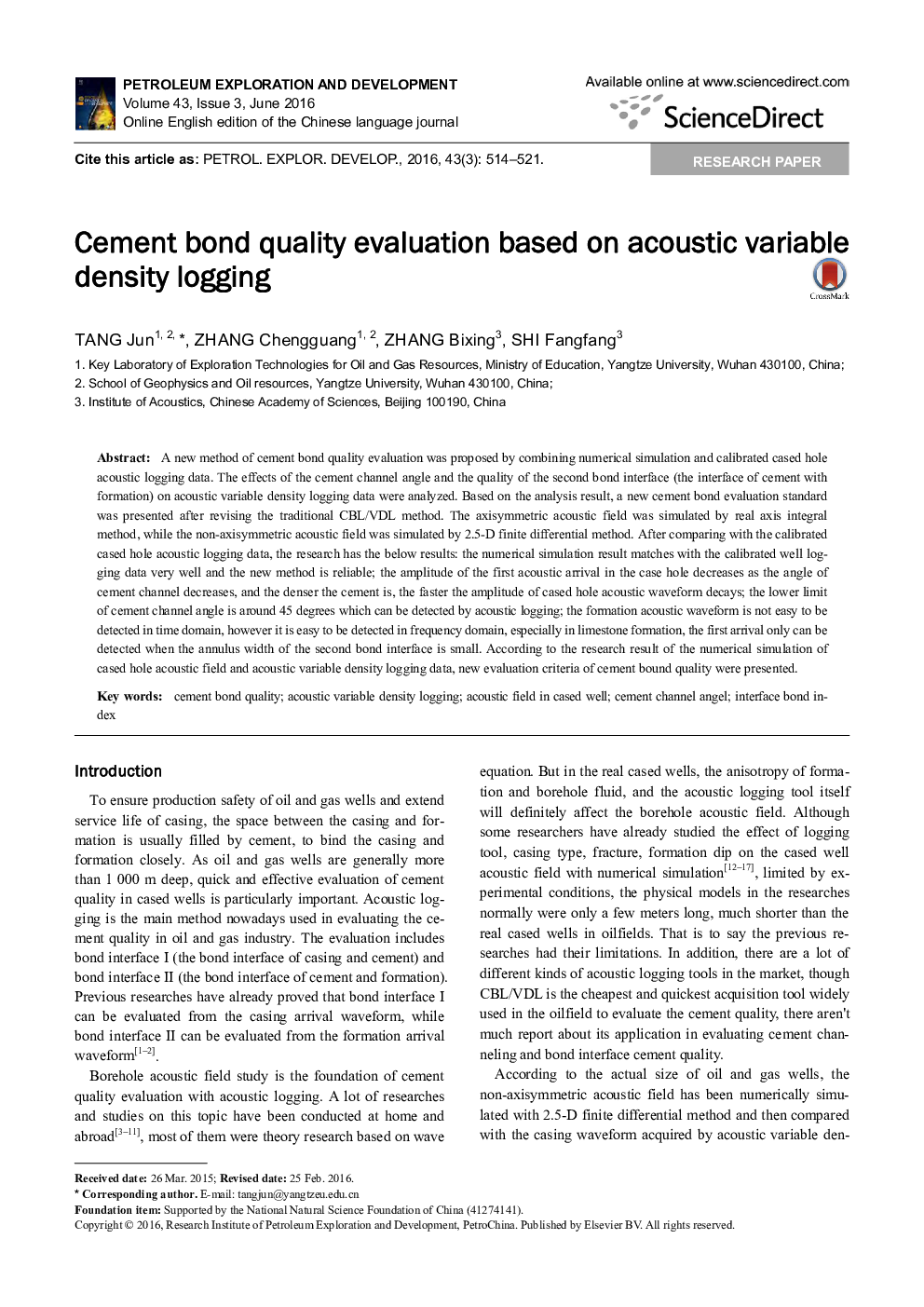| Article ID | Journal | Published Year | Pages | File Type |
|---|---|---|---|---|
| 4719937 | Petroleum Exploration and Development | 2016 | 8 Pages |
A new method of cement bond quality evaluation was proposed by combining numerical simulation and calibrated cased hole acoustic logging data. The effects of the cement channel angle and the quality of the second bond interface (the interface of cement with formation) on acoustic variable density logging data were analyzed. Based on the analysis result, a new cement bond evaluation standard was presented after revising the traditional CBL/VDL method. The axisymmetric acoustic field was simulated by real axis integral method, while the non-axisymmetric acoustic field was simulated by 2.5-D finite differential method. After comparing with the calibrated cased hole acoustic logging data, the research has the below results: the numerical simulation result matches with the calibrated well logging data very well and the new method is reliable; the amplitude of the first acoustic arrival in the case hole decreases as the angle of cement channel decreases, and the denser the cement is, the faster the amplitude of cased hole acoustic waveform decays; the lower limit of cement channel angle is around 45 degrees which can be detected by acoustic logging; the formation acoustic waveform is not easy to be detected in time domain, however it is easy to be detected in frequency domain, especially in limestone formation, the first arrival only can be detected when the annulus width of the second bond interface is small. According to the research result of the numerical simulation of cased hole acoustic field and acoustic variable density logging data, new evaluation criteria of cement bound quality were presented.
